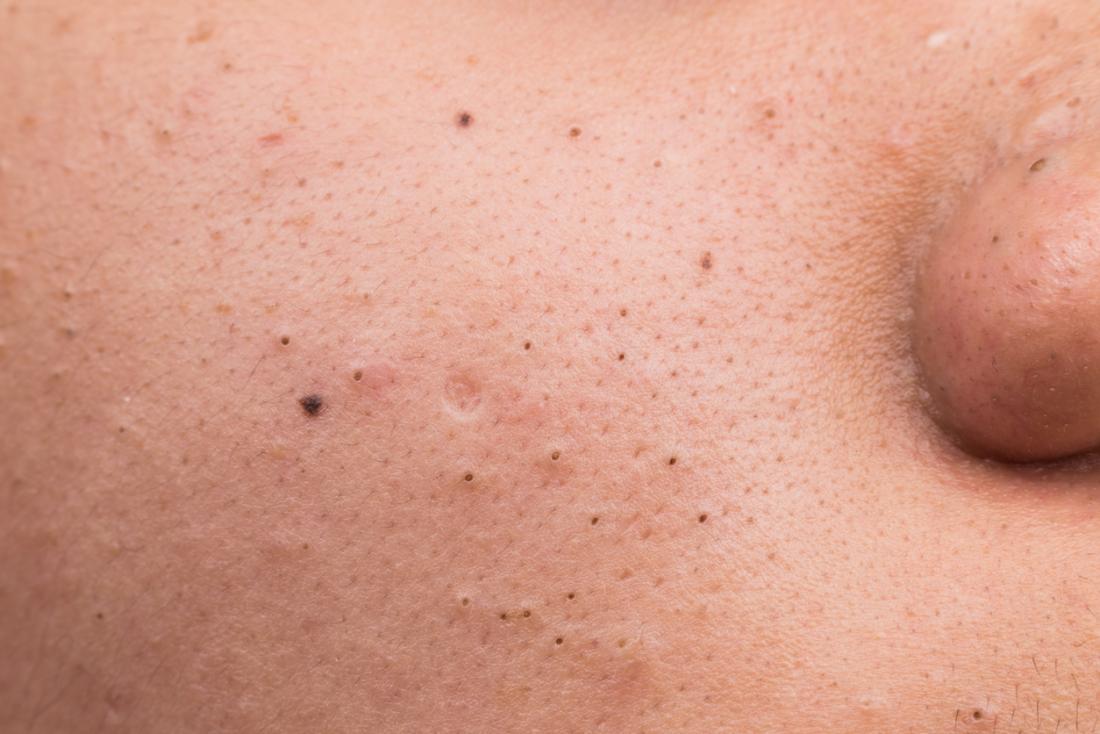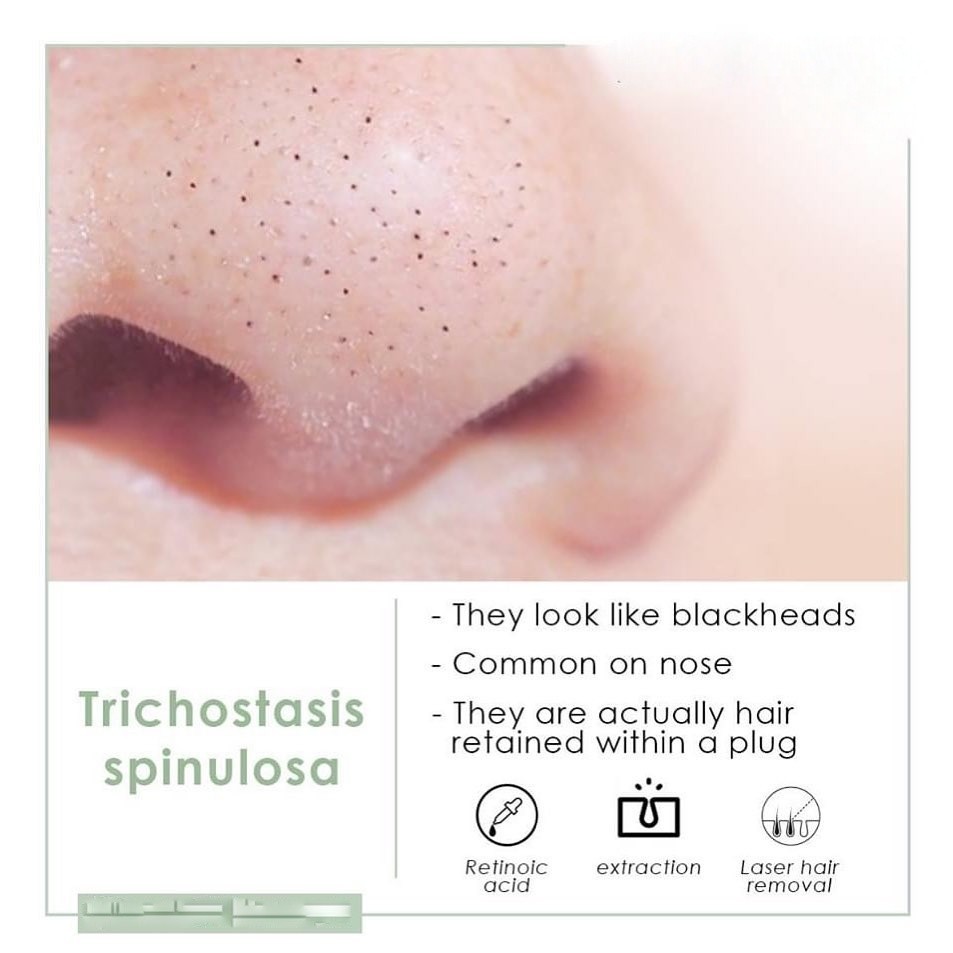Trichostasis spinulosa is a condition that results in the growth of small, sharp spines on the surface of the skin. The spines can grow in any area of the body, but they are most commonly found on the face, neck, and scalp. Trichostasis spinulosa is not contagious and does not cause any pain or discomfort. However, the condition can be cosmetically displeasing, and it can be difficult to remove the spines without causing damage to the skin.
The condition is characterized by the retention of keratin within the follicular canal, resulting in the formation of small, hard plugs. TS typically presents as asymptomatic, fine-to-moderate pilaris-like papules on the face, neck, and upper trunk. However, TS can also lead to comedones, cysts, and scarring. While the exact prevalence of TS is unknown, it is thought to be more common in women than men. Treatment for TS typically includes topical retinoids or keratolytics.
History of Trichostasis Spinulosa
TS was first acknowledged by Felix Franke, a German dermatologist in 1901. It was then called Pinselhaar. The condition is more common in women than men, and typically affects people between the ages of 20 and 40. While TS is not medically dangerous, it can cause physical discomfort and emotional distress. There is no cure for TS, but various treatments are available to manage the symptoms. However, no one knows its exact etiology.
Abnormal dorsiflexion of the hair follicle cause plugging of the hair shaft, which in turn causes an inflammatory reaction and the development of papules and pustules. The predominant hypothesis is that it is caused by a blockage of the sebaceous glands, but there is no definitive evidence for this. The condition most often affects middle-aged women, although it can occur at any age. It is more common in Caucasians than in other racial groups.
Cause of Trichostasis Spinulosa

The trichostasis spinulosa cause is unknown, but it is thought to be due to a combination of genetic and environmental factors. There are several theories about what may contribute to the development of this condition, but more research is needed to confirm any of these theories.
However, it is considered that this can be caused by a variety of factors, including genetic predisposition, certain medications, and underlying skin conditions. One theory is that it is caused by an overgrowth of the normal bacteria that are found on the skin. This can be due to a number of factors, including using too much soap, not washing properly, or using an abrasive cleanser. Another theory is that it is caused by a build-up of sebum and keratin in the hair follicles. This can be due to a number of factors, including genetics, hormonal changes, or certain medications. Finally, it has also been suggested that trichostasis spinulosa may be caused by a combination of these factors.
This problem is most common in people with oily skin. Most dermatologists say that this may be due to a disturbance of the internal mechanism. While some say that due to excess use of soaps, and creams containing paraffin, dust, and industrial oil the external mechanism gets disturbed leading to TS.
There is some debate whether trichostasis spinulosa is a variant of the come-donal lesions seen in acne. Some experts note that both conditions share similar characteristics, such as the presence of small, sharp bumps on the skin. However, others point out that trichostasis spinulosa typically affects older adults, while acne is more common in teenagers and young adults. Additionally, trichostasis spinulosa tends to occur on the face, neck, and chest, while acne can appear anywhere on the body.
Symptoms
Although trichostasis spinulosa is a benign condition, it can cause some individuals a great deal of discomfort. The condition is characterized by the formation of small, sharp spines in the hair follicles, pruritus, and pili multigemini. These spines can become entangled in the hair, causing it to break off. In addition, the spines can irritate the skin and cause itching. In most cases, however, the condition does not lead to any subjective complaint and is asymptomatic.
Trichostasis Spinulosa Treatment

Tweezing with forceps is often the first line of treatment for trichostasis spinulosa. The forceps are used to grab and pull out the small, sharp spines. This method is often effective, but it can be painful and time-consuming.
Pressure expression with a come-done extractor is another treatment option for trichostasis spinulosa. This method involves applying pressure to the affected area with an instrument called a comedone extractor. You can also use the adhesive strips of the wax for the removal of hair follicles.
Treatment of trichostasis spinulosa typically involves the use of topical retinoids or laser therapy with a 755 nm long laser.
The individual papules can be removed by electrosurgery, CO2 laser ablation, dermabrasion, or cryotherapy. However, because the papules are often numerous and widely distributed, these treatments can be quite time-consuming and expensive. Additionally, recurrence is common following any of these treatments. For these reasons, many people with trichostasis spinulosa choose to simply leave the condition untreated.
Trichostasis Spinulosa vs Black Head

Trichostasis spinulosa is a condition that mostly results due to pilosebaceous follicles on the nose. Most people confuse it with blackheads. While blackheads are small, dark-colored bumps that form when hair follicles become clogged with oil and dead skin cells. Trichostasis spinulosa occurs when the openings of hair follicles become blocked by these same materials. On observing keenly 4-5 hairs are seen at one follicle. The hair follicles are unable to release their contents properly, which results in blackheads. Here are some tips to get rid of them. It is most common in adults and women.
Conclusion
Trichostasis spinulosa is a condition that results in the overgrowth of keratin in the hair follicles. The main treatment for this condition is to use topical retinoids, which help to reduce the amount of keratin in the follicles. There are many treatments recommended for it. In some cases, laser therapy may also be used to remove the excess keratin.

A fervent champion for holistic well-being, graces this community with her expertise in health and fitness. With a solid educational foundation in physical fitness and a commitment to empowering others, Sara distills her extensive knowledge and experience into actionable insights. Her writing, firmly grounded in evidence-based practices, aims to demystify health complexities and inspire readers to cultivate sustainable habits for a balanced life. As a certified fitness trainer, Sara offers a well-rounded perspective on wellness. Join Sara on this transformative journey towards a happier, healthier, and more vibrant you.







Loading…